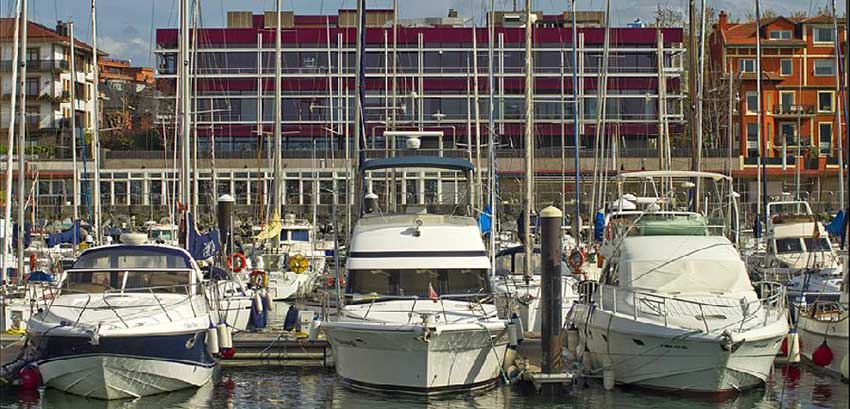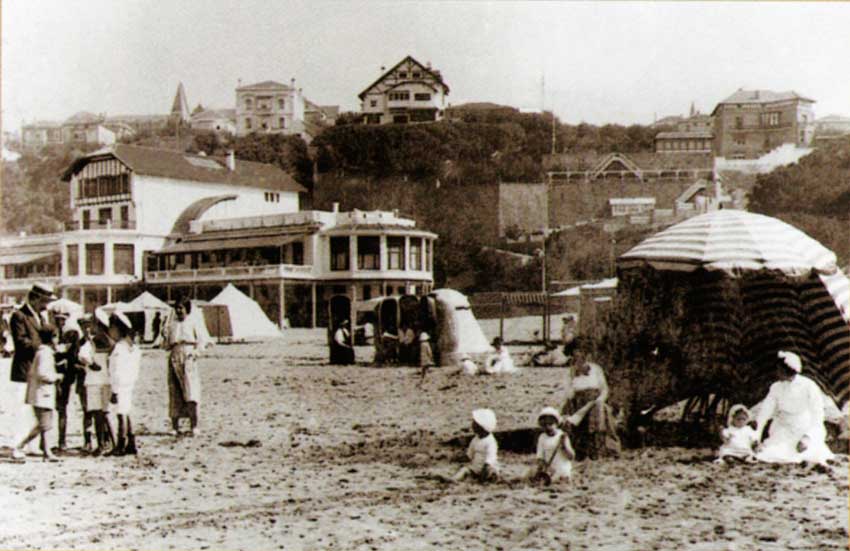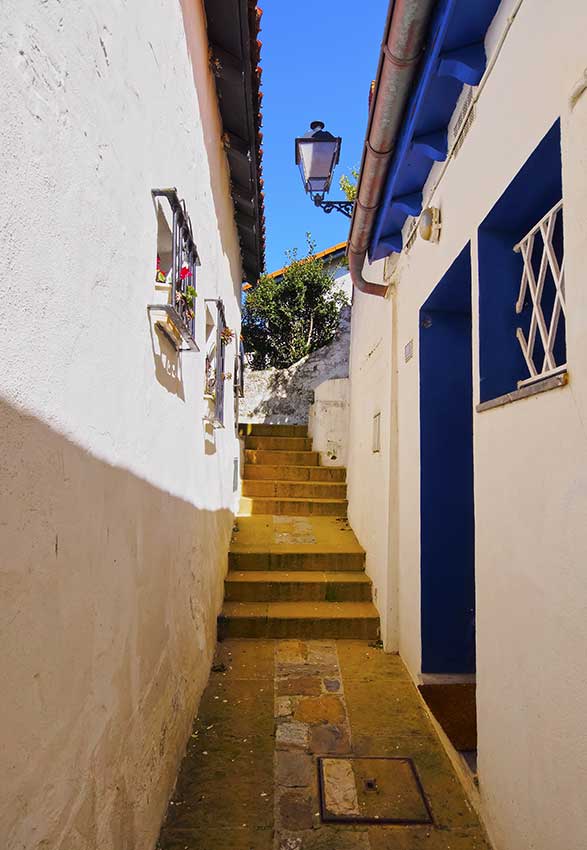Step 4_ GETXO. THE MANSIONS OF THE INDUSTRIALISTS
 Route 3.5 km
Route 3.5 km
We are now in Las Arenas; one of the five areas that make up the sprawling town of Getxo. Although their social makeup is very different between them, it contains two of the most affluent neighbourhoods in Spain; this one of Las Arenas and, especially, the adjacent Neguri ("winter town" in Basque), where a large number of palaces and mansions are to be found. Here the cream of the Basque business class gathered, although today there is only one mansion that has been occupied continuously by the same family.
As mentioned with the Iron Pier, the name Las Arenas made direct reference to the beaches, marshes and meadows, crossed by numerous streams that made human life impossible. In fact, in 1860, this area only had 36 inhabitants, living against the bases of the hills that surround it.
From that year maritime pines, gorse and other plants with which to fix and hold the soil began to be planted. In 1868, the first spa had already been built, and this was the gateway to the construction of houses; first summer houses and then proper mansions for the gentry and industrial oligarchy.
In fact, if you walk along the bank of the river to the beach and walk along the whole esplanade (1.8 km) you will see houses with an unmistakable English air.
The main entrance of these houses are in Zugazarte street parallel to this, so we recommend that you alternate the seaside path with the road on the other side to look at their main facades and see the other mansions that do not overlook the sea.
The succession of buildings, styles, distributions, origin of the owners and architects profiles is explained in 29 trilingual panels that offer a detailed explanation, both along this esplanade and on the walk at right-angles to this one, below the Arriluce hill which leads to Ereaga beach. If any of the panels are damaged at the time of your visit, you can consult the enclosed booklet. It is a Monumental Complex that was recognized as a Heritage Site in 2011.
Before starting this part of the walk it is worth considering the fact that many of these mansions were abandoned by the families living there between the 1970s and 1980s. The reasons can be found in a concatenation of circumstances: the closure of businesses they were owners of, the excessive costs of maintaining these large buildings and the pressure of terrorism that for decades subjected the elite that lived here to unbearable pressure. As evidence of the harassment by ETA that the Basque business classes underwent, it is enough to look at the example of their social club par excellence: the El Abra Sailing Club (22), which suffered three terrorist attacks between 1973 and 2008. The building is located between residential buildings and you can see the back of it just at the end of the small beach of Las Arenas.
The recovery of the houses in the area is due also to a combination of factors that have affected their development: occupation as head offices of companies, conversion to hotel businesses, internal division into flats...
Here and on Arrigunaga hill lived the most celebrated industrial and financial families in Spain: Ybarra, Lezama-Leguizamón, Zabálburu, Aresti, Delclaux, De la Sota, Lipperheide, Zubiria and Arana, who, to show their economic position and social impact, hired the most famous architects of the time: Achúcarro, Bastida, Iturria, Garamendi, Amann. Among them, the Anglophile Manuel Mª de Smith stands out for the quantity, diversity and originality of his work.
This part of the walk, along the sea front, continues along the Paseo Marqués de Arriluce (24) at right-angles to this esplanade under the hill of the same name.
This stretch finishes at the end of Arrigunaga hill where the Punta Begoña Galleries stand open in front of the 1920s lighthouse, (the old lifeboat station) currently occupied by the Red Cross of the Sea.
And the route opens onto Ereaga beach. In the middle stands the old Igeretxe Spa (25). The present building was built in 1913 and is one of the first erected in reinforced concrete. The exterior structure appears plastered and painted and the decoration, which formerly followed Basque designs (false half-timbering, arched gate in thick stonework, fire doors ...) has been simplified to a minimum.
To return to Bilbao, you have 2 metro stations:
- Neguri: you can get to this station by walking up the hill opposite the Igeretxe spa. This is a good option if you want to continue walking among the town houses and mansions until you end up in the square with the metro, which may remind you of an English square.
- Algorta: Continue along the sea walk to the cable lift 300m further on from the Igeretxe; when you can to the top, the station is about 800m away. Another option is to keep walking around the bay until you reach the picturesque area of the Old Port of Algorta (26); if you climb its steep steps and slopes to the top, you will also come out very close to the metro station.











































